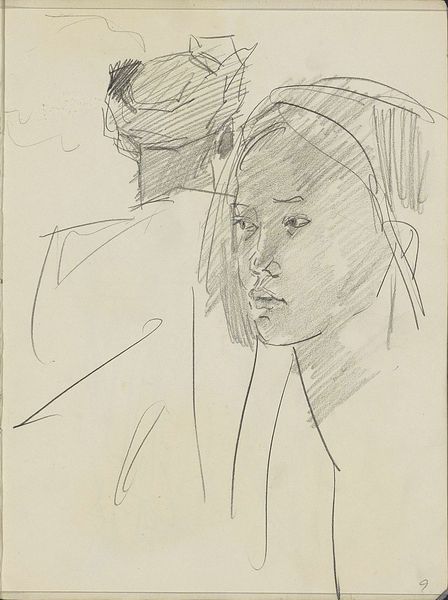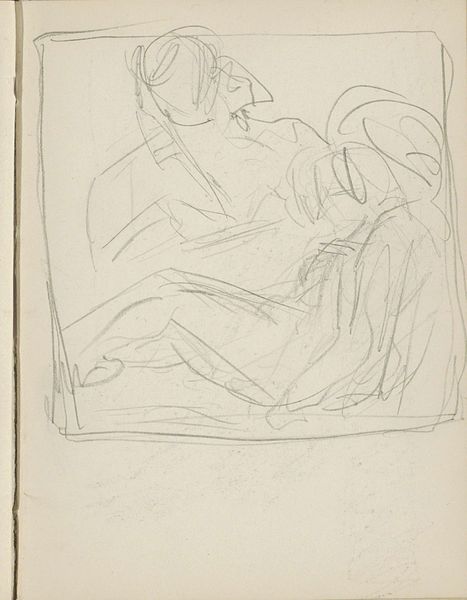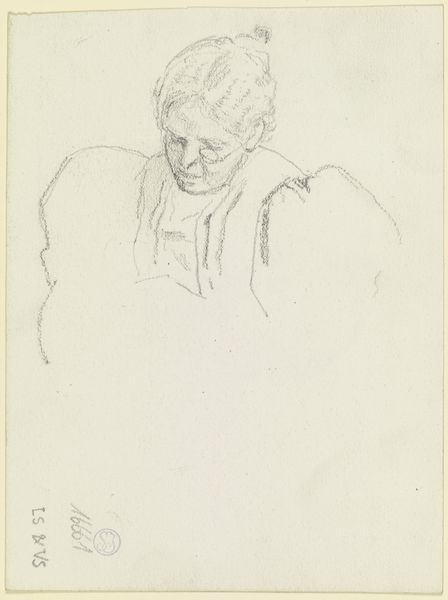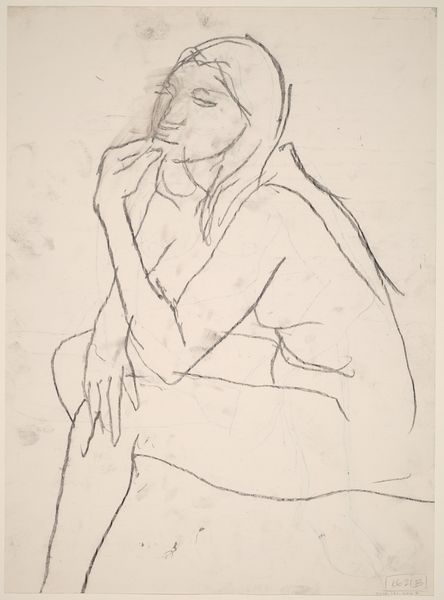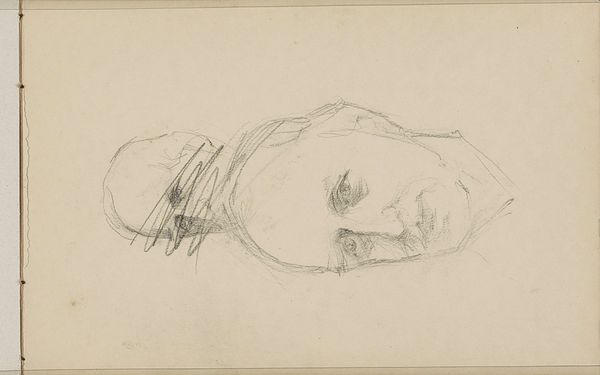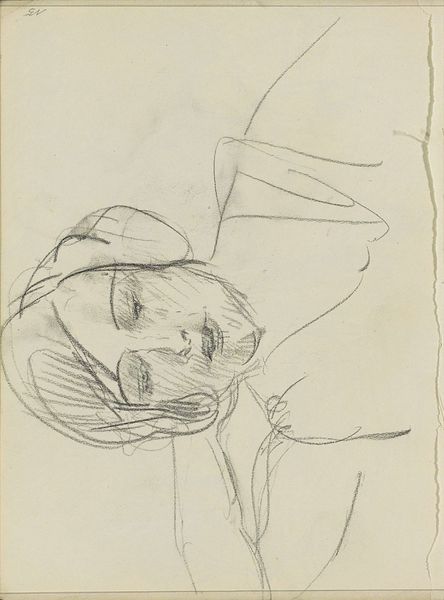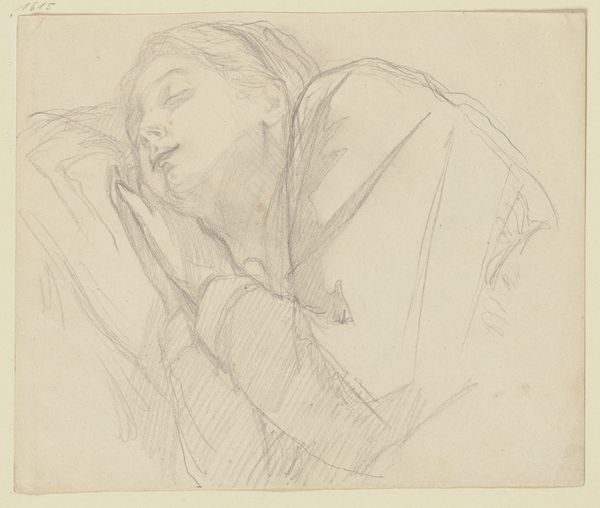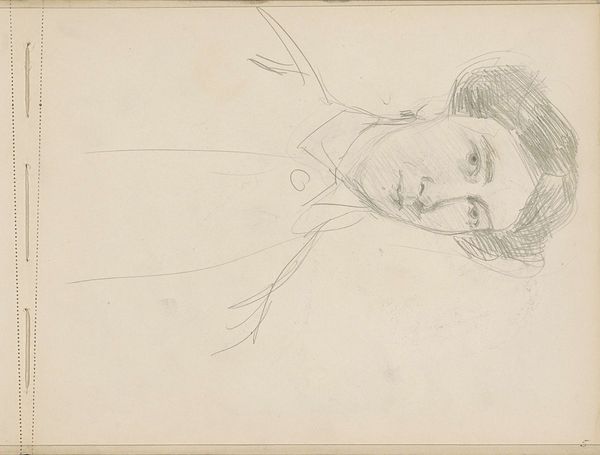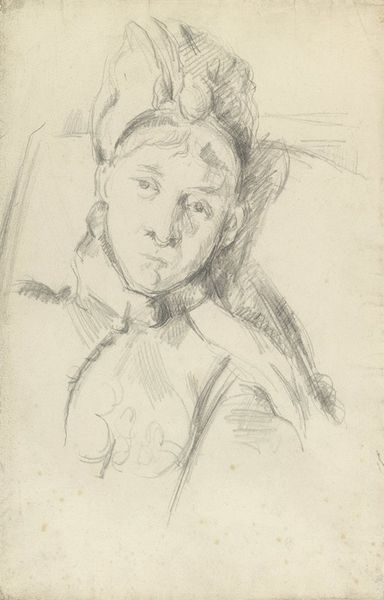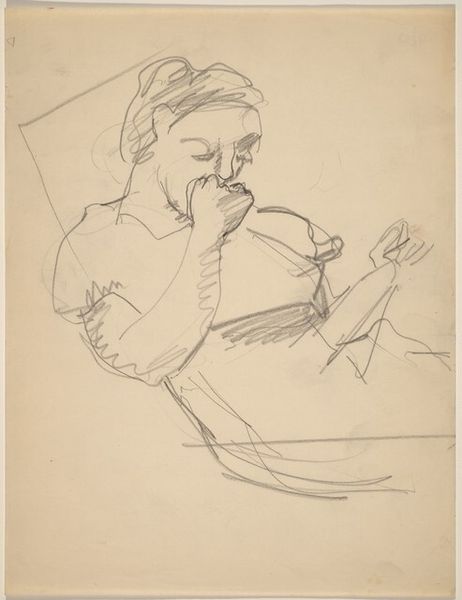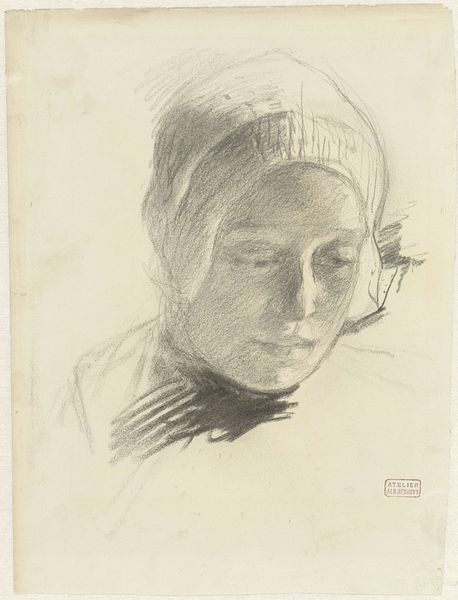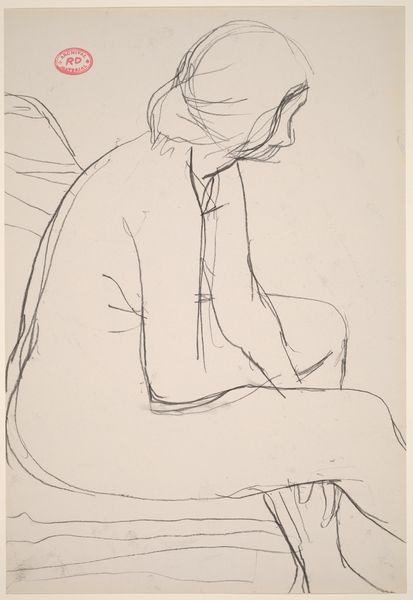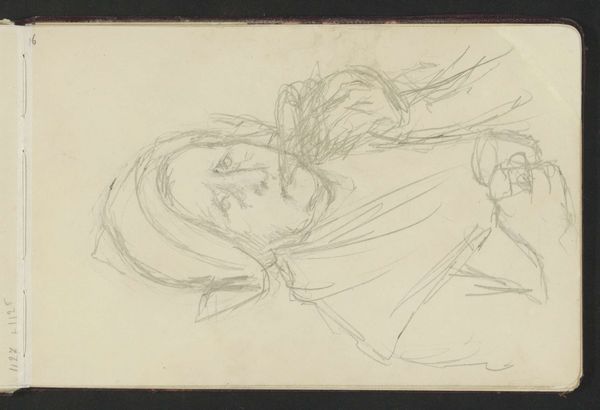
drawing, pencil
#
portrait
#
drawing
#
amateur sketch
#
facial expression drawing
#
light pencil work
#
impressionism
#
pencil sketch
#
personal sketchbook
#
idea generation sketch
#
pencil drawing
#
pencil
#
portrait drawing
#
pencil work
#
realism
#
initial sketch
Dimensions: height 305 mm, width 208 mm
Copyright: Rijks Museum: Open Domain
Editor: Here we have "Schets van twee meisjes," a pencil drawing by Jozef Israëls, created sometime between 1834 and 1911. It looks like a preliminary sketch, maybe something from a personal sketchbook. What strikes me is the almost ephemeral quality of the lines. What do you see in it? Curator: Looking at this piece, I immediately consider the context of pencil as a material. This isn't oil paint or bronze; it's graphite, readily available, easily erasable. Consider its use within the domestic sphere – a tool for learning, for crafting, available to many. Was Israëls deliberately choosing a 'humble' medium, pushing back against the grand narratives often associated with art? Editor: That's interesting. I hadn't thought of the pencil itself as making a statement. So, are you saying that the very choice of materials could be a social commentary? Curator: Absolutely! And further, the 'sketch' implies process, not necessarily a finished product. Think of the labor involved, not just Israëls' hand, but the entire chain of production of the pencil itself. Mining the graphite, shaping the wood... This connects the art object to a broader world of work and materiality. Was this intended as a study for something more 'finished'? Or is its inherent 'unfinishedness' the point? Editor: That’s fascinating, looking at the labor behind even what seems like a simple drawing, something mass-produced even. Curator: Indeed. Think of how readily available art materials changed artistic production in the 19th century. Could it be argued that this seemingly simple drawing embodies a shift away from art as solely high-end commodity towards art making as more accessible act? Editor: I never thought of approaching art from this angle, from the angle of the materials' story and how that can give insights into its social or historical meaning. Curator: Precisely. By examining the material reality of art production, we challenge traditional hierarchies and gain a richer understanding of the artwork itself and the world in which it was made.
Comments
No comments
Be the first to comment and join the conversation on the ultimate creative platform.
